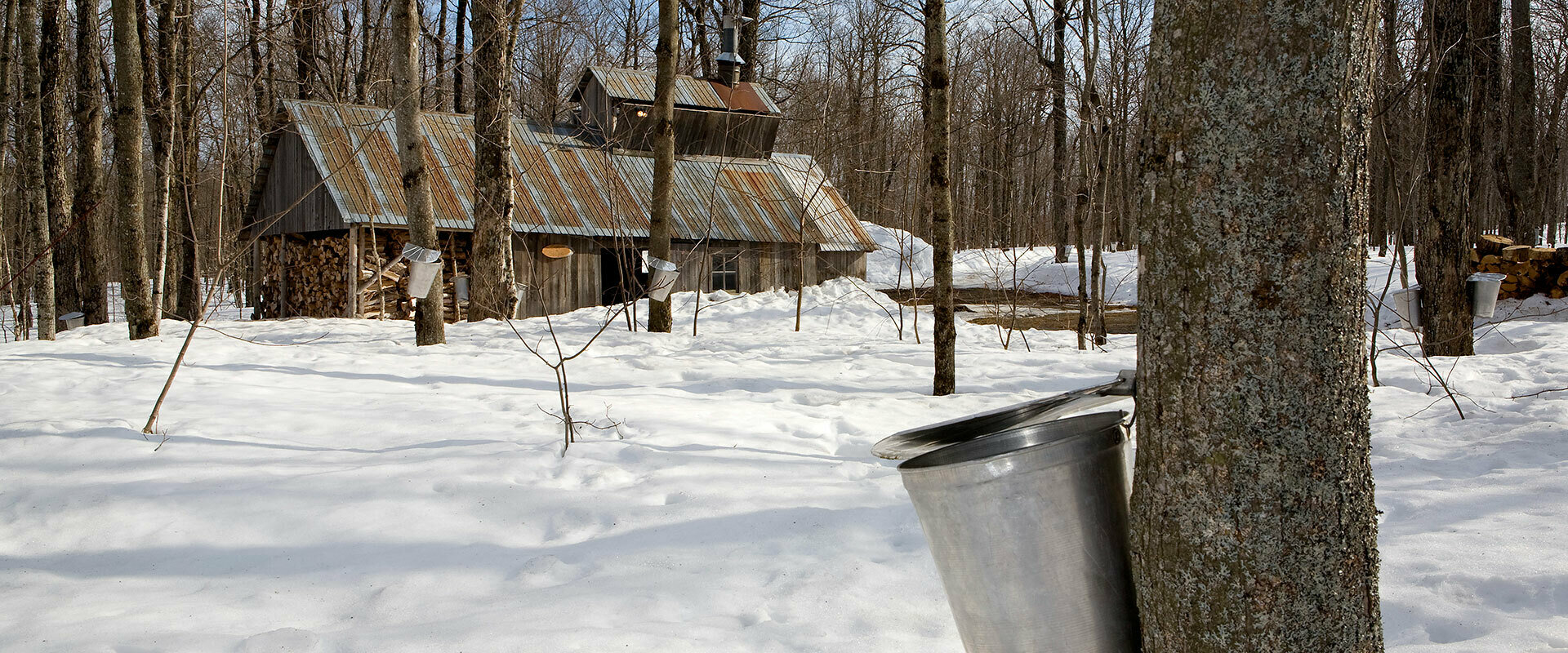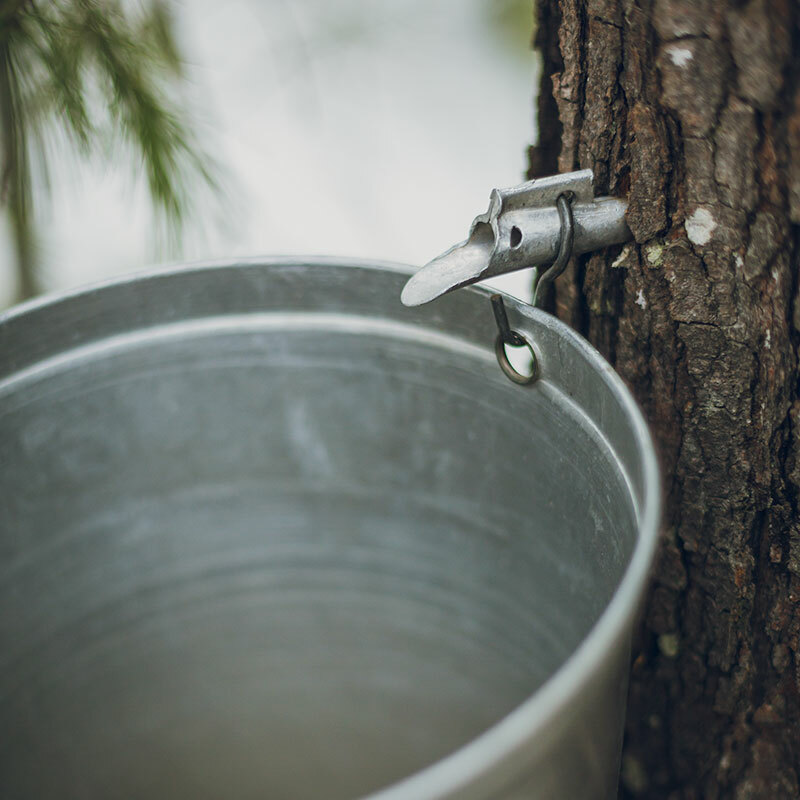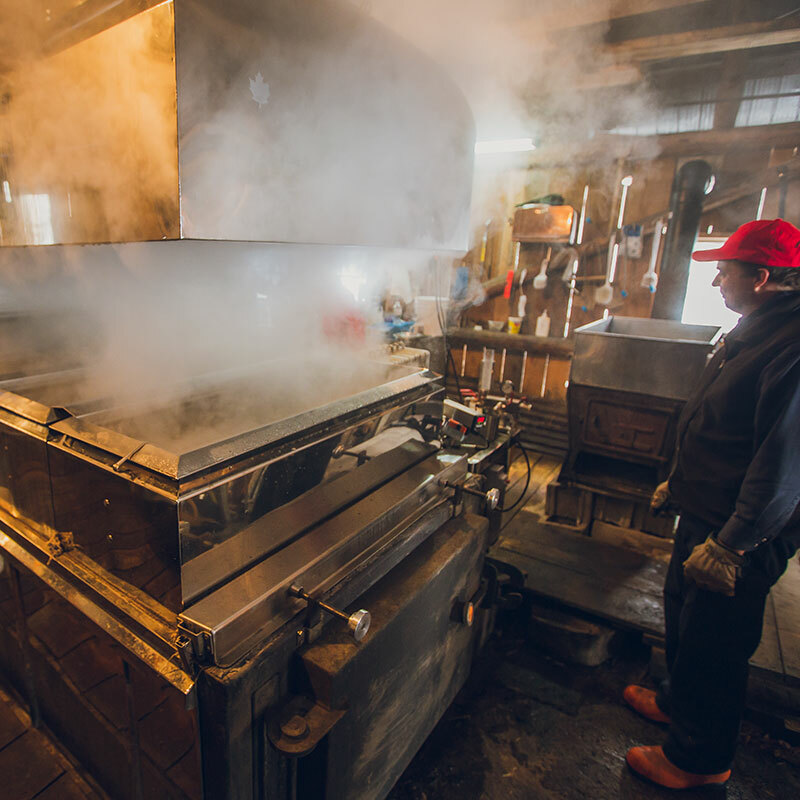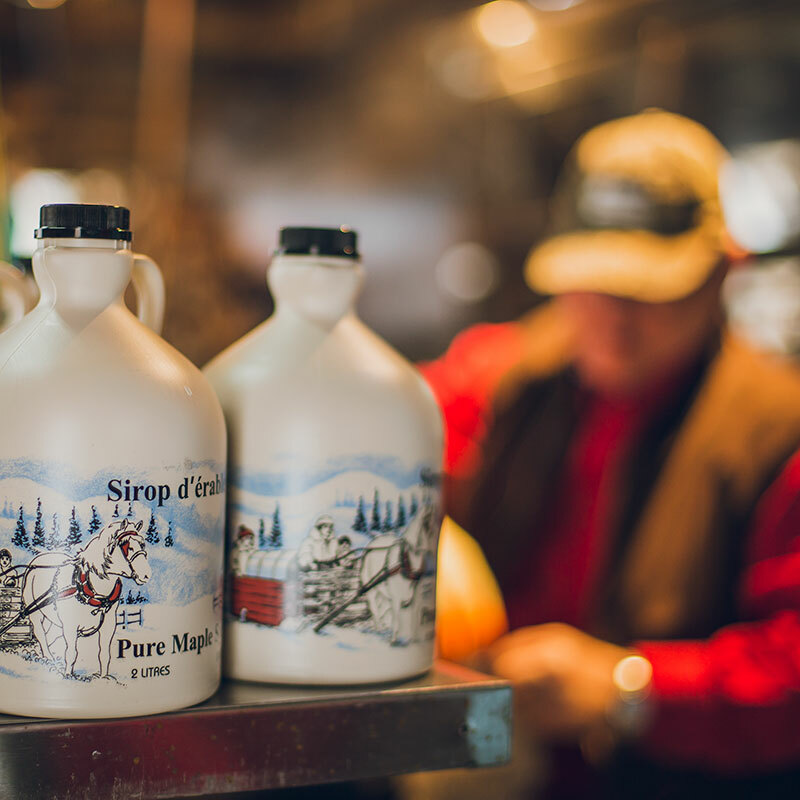Why is maple syrup such a big deal in Canada? We've got 29 reasons why
If you're not from Canada, or even if you're not from Quebec or Eastern Ontario, you might have spent some time wondering what the big deal is about maple syrup. Is it just a stereotypical Canadian symbol that isn't actually definitive of Canadian culture, like beavers, which only 12 people have ever actually seen in real life? Maybe the extent of your connection to maple syrup only arises when you're in a hostel in another country and a non-Canadian sees a flag on your backpack and asks you if you drink maple syrup for breakfast like everyone else in Canada. You know what, some of us do, okay? And for good reason. If you don't know why, this is for you.
Another fleeting maple syrup season is upon us, so sit back and soak in some of the many amazing facts about maple syrup, which you can use next time you're prompted to drop some knowledge about Canada's finest export. Maybe you won't ever drink it straight out of the bottle, but did you know...
- Over 70% of the entire world's maple syrup is produced in Quebec.
- Canada produces about 85 million kilograms of syrup a year and, in 2020, exported more than $515 million dollars worth of it, most of which went to the United States.
- Indigenous Peoples, including the Abenaki, Haudenosaunee and Mi’kmaq, made use of maple sap (aka "sweet water") and produced maple syrup in what is now Canada well before Europeans arrived, and maple syrup season still plays an important role in many Indigenous customs and traditions.
- Today, the Federation of Quebec Maple Syrup Producers manages maple syrup production and supply chains in the province and also keeps a reserve of syrup, called the Global Strategic Maple Syrup Reserve (more on this later).
- Maple sap comes out of the tree clear since it's mostly water. The syrup gains its brown colour through evaporation during the boiling process.
- There are 13 species of maple tree in Canada that can be tapped for sap.
- In Ontario and Quebec, the preferred tree is the sugar maple, which can grow to be 200 or even 300 years old.
- Trees aren't usually tapped until they're about 30 years old.
- In Manitoba and Saskatchewan, makers produce syrup from the Manitoba maple tree, which yields about half the sap of a sugar maple and has a slightly different flavour. In BC, producers use sap from the bigleaf maple.
- A maple syrup farm is normally called sugar bush and the building in which the sap is processed is called the sugar shack.
- The average sugar maple tree will produce 35 to 50 litres of sap per season.
- It takes about 40 litres of maple sap to produce one litre of maple syrup.
- Maple season typically begins when daytime temperatures regularly rise above freezing but dip below zero at night, stimulating the flow of sap within the tree.
- Small-scale maple syrup operations or hobbyists will collect the sap directly into a bucket hung on the tap, which is bolted into the tree trunk. Sap needs to be collected daily.
- Larger or commercial operations will string up flexible PVC tubing between the trees, funnelling all of the sap into a collection bin, in or around the sugar shack, with the help of gravity, or sometimes with the assistance of a vacuum pump.
- There are over 53 million maple taps in Canada
- The entire season only lasts about four to six weeks, from late February to early April
- Sap typically stops running once new buds appear on the tree.
- Sugar shacks are small, usually wooden buildings that offer a sheltered space to boil down the sap. Traditionally this happens over a wood-burning stove, but larger operations use industrial equipment in larger more established buildings, sometimes with a dining establishment attached so you can sample the wares!
- Canada and the US have different standards for maple syrup. In Canada, it must be made entirely from maple sap. In the US, it must be mostly maple sap, but can also include additives like—sit down for this one—salt.

© Tourism Québec / Mathieu Dupuis
- In Canada, there are laws against using the word maple in the name unless it has at least 10% maple syrup in it—imposters include products like maple-flavoured syrup, pancake syrup, table syrup or original syrup where the main ingredient is usually high-fructose corn syrup.
- Agriculture Canada has a "flavour wheel" that identifies 91 unique flavours that can be found in maple syrup, which are divided into 13 families from spicy to burnt.
- There are people whose job is to sample maple syrup, like wine sommeliers.
- At the end of 2014, the Canadian Food Inspection Agency implemented a new grading system for maple syrup, which grades a syrup on its colour and taste. Grade A syrups are classified as golden, amber, dark or very dark in colour and delicate, rich, robust or strong in taste.
- Dark and very dark syrups tend to have the most intense maple flavours and are said to be better for cooking and baking. Lighter syrups are normally harvested earlier in the season and tend to be favoured as breakfast toppings.
- In South Korea, it's not unusual to consume maple sap, without boiling it down into a syrup.
- There was once a Great Canadian Maple Syrup Heist, but not in the early 20th century like you might expect—it was in 2011 and 2012! Over several months, over 3,000 tons of maple syrup were stolen from a storage facility in Quebec. This maple syrup reserve was managed by the Federation of Quebec Maple Syrup Producers, a system to control maple syrup prices and supply. The thieves took barrels of maple syrup from various storage facilities, emptied them at remote sugar shacks, refilled them with water and then returned the barrels to the storage facilities. In the end, only some of the syrup was recovered and over two dozen people were arrested. You can learn more about it in S1E5 of the Dirty Money docuseries on Netflix.
- Maple syrup production was flowing in Quebec until 2020. But the 2021 season was a bit of a dud, thanks to a quick spring thaw. As a result, the Federation of Quebec Maple Syrup Producers released over half of its strategic reserve—50 million pounds—into the market. Forty-two million pounds remain.
- Climate change is a very real threat to Canada's maple syrup industry.
We highly recommend a trip to a sugarbush or a sugar shack during syrup season to see this amazing process in action and to sample some fresh maple syrup, maple taffy, maple sugar candy, maple sugar pie, maple-baked beans, maple sausages, maple bacon, maple butter, maple fudge, maple BBQ sauce, maple whiskey and... okay, it really is magical stuff. Enjoy!







